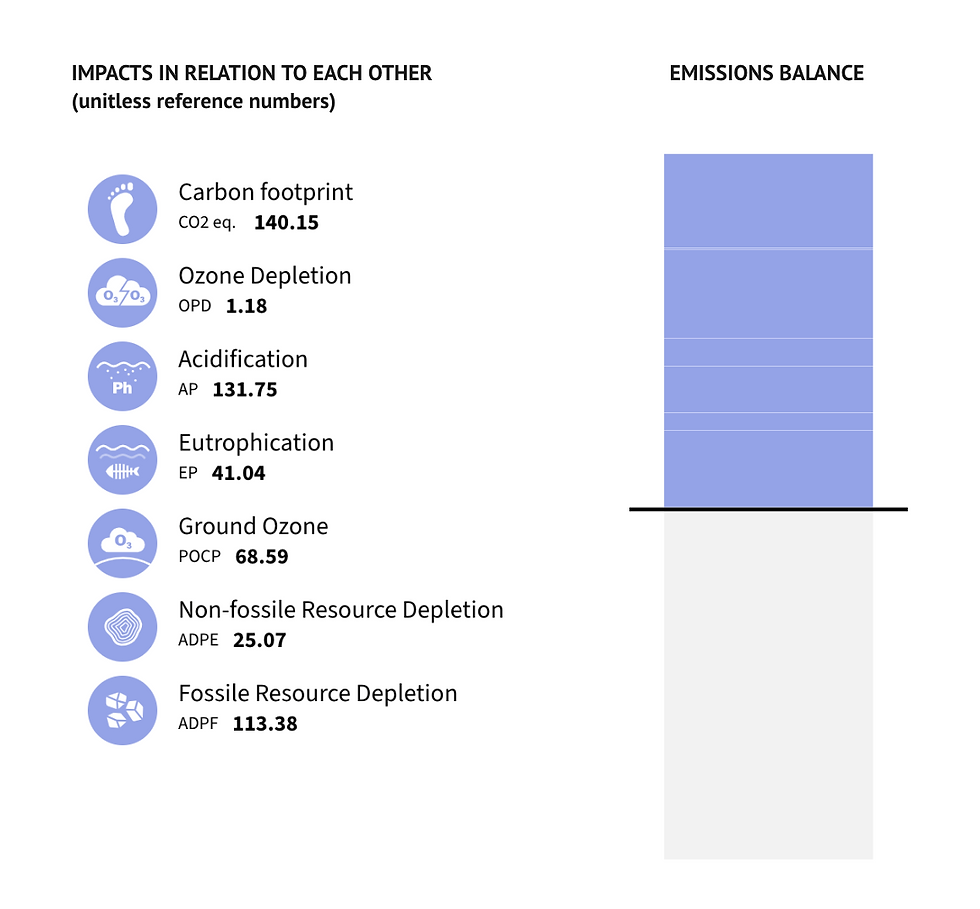The Environmental Profile: Ecosystem Impact
- hildarantanen3
- Nov 10, 2023
- 3 min read
Updated: Nov 12, 2023

As we fight climate change, we are also facing another major challenge: the impoverishment of nature and ecosystems.
Many substances and practices used in the procurement of raw materials, manufacturing of materials, transportation, maintenance, and disposal of products, as well as the energy production and chemicals used in these processes, are harming the environment and exacerbating these problems. The resulting effects, such as eutrophication and acidification of waters, depletion of various raw materials, and loss of ozone, should also be considered, in addition to atmospheric warming.
The emissions that cause these impacts should be made visible so that they can be taken into account at every level of the design and building processes. Currently, this is not the case, even though more data is being collected on these impacts. The European Union, for example, is strongly aligning its practices in this direction.
Beyond carbon emissions
At Materialisting, we want to be part of this future development already today, and we want to make it possible for you to be a part of it too! Until now, it's been hard to find information about the ecosystem impacts of different products, and quite impossible to understand and compare them.
We have made this information available on our Platform in a form that is easy to understand and compare, so that you can make informed decisions in all your work.
On the Platform
The Ecosystem Impact Profile of a product is displayed on the Platform as a separate, illustrated graph, which includes a breakdown of emissions with different effects.

As the graph contains different types of emissions, we have used sets of normalization and weighting factors carefully determined by research groups consisting of scientists and LCA specialists. This allows us to show the ratio of the different emissions in relation to each other, taking into account the severity of their effects and their quantity. It also makes it possible to produce a single total value that is comparable between different materials.
The total Ecosystem Impact value is visible in the search, and the material listing can be arranged by this value. To make this information truly comparable between different products, you can also set different time periods to view the data. This means that if the service life of the product itself is less than your set time period, we take into account the emissions from replacing the product the required number of times, including the production of new material and disposal/recycling of old material. This gives products with a longer lifespan the credit they deserve for being more environmentally friendly.
With Premium Subscription you will be able to (among other things) compile Project Folders and calculate the Ecosystem Impact value for combinations of materials. This will make it easy to report different products' environmental attributes, which can be used to communicate with customers and authorities!
Note:
Due to a transitional phase in EU regulation, two types of EPDs currently coexist on the market, and the information they contain is not always directly comparable. If you want to avoid this, use the EPD-filters in the search to select the type of EPDs (EN15804+A1 or +A2) you want to see in the search. Because +A2 EPDs are required to consider the product's life cycle more comprehensively than +A1 EPDs, +A2 EPDs might generally show higher Carbon values than +A1 EPDs.
Read more about the differences between +A1 and +A2 EPDs from our previous post about data quality!




Comments